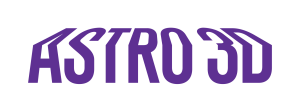Exploring the connection between the cosmic web and galaxy evolution for next generation surveys
Dates
17-21 September 2018
Location
ICRAR-UWA, 7 Fairway, Crawley, 6009, Western Australia
Rationale
On the largest scales of the Universe, matter is organized as a network of voids, walls and over-dense filaments along which dark matter and baryons flow towards nodes hosting massive clusters. This highly anisotropic cosmic web informs the geometry and dynamics of various accretion modes onto galaxies (through collimated streams and mergers) hence impacts their evolution, in particular the evolution of their gas content and angular momentum. Increasing evidence for such a connection have been found over the years with the discovery of correlations between the orientation of galactic spins and that of local cosmic filaments. How well can we identify the baryonic cosmic web and infer its dynamics? Can we constrain the impact of cosmic flows on galactic structure and kinematics? Can we find smoking-gun signatures of this interplay at low-redshift? Can we go beyond the simple analysis of spin orientations? With the advent of next-generation facilities such as the SKA and the development of large scale integral field spectroscopy surveys such as SAMI, MaNGA and soon Hector, specifically designed to track these interactions, there is an increasing need to bring together theorists of the large scale structures of the Universe and experts on galaxy dynamics and the identification of cosmic structures to better constrain the design of such surveys, develop methods to unravel this complex interplay between galaxies and their environment and make predictions for next generation All-sky surveys.
The workshop will consist of three days of conference-style lectures followed by two days of hands-on workshop segmented in sessions dealing with specific projects. It will critically review major progresses in the description and reconstruction of the cosmic web enabled by recent observational and computational advances, and key developments in the understanding of its impact on galaxy evolution. It will launch a series a projects involving joint contributions from observers and numericists and foster international collaborations. Projects will be debated during the workshop and will include the production of mocks for upcoming surveys and the development of methods to relate galactic spins to the archaeology of cosmic flows.
This workshop is sponsored for the ARC centre of excellence for Astrophysics in 3 dimensions.
Childcare throughout the workshop can be provided on demand. If you require childcare, please contact Dr. Charlotte Welker and Pr. Lisa Kewley before August 30.
Key topics:
- The cosmic web: reconstruction and analysis in observations and simulations.
- Constraints on the baryonic cosmic web and cosmic flows.
- Updates from the synchrotron cosmic web.
- Impact on the dynamics of clusters: satellite alignment, shape, shock geometry
- Alignment of galactic spin and cosmic large scale structure
- The cosmological origin and evolution of angular momentum (AM)
- Synergies with HI surveys and precision kinematics provided by integral field spectroscopy and interferometry
- Modelling inflows and outflows on galactic scales: the impact of the large scale structures
Key Dates
- First Announcement: May 17
- 2nd Announcement: June 25
- 3rd Announcement: July 15
- Abstract submission close: August 17
- Registration Close: August 30
Invited speakers
- Christophe Pichon
- Clotilde Laigle
- Barbara Catinella
- Jesse Van de Sande
- Katarina Kraljic
Travel and Accommodation
Participants will arrange their own travel and accommodation.
Scientific Organising Committee
- Charlotte Welker, UWA (Chair)
- Clotilde Laigle, Oxford
- Christophe Pichon, IAP
- Joss Bland-Hawthorn, USYD
- Pascal Elahi, UWA
- Claudia Lagos, UWA
Local Organising Committee
- Charlotte Welker
- Chris Power
- Liang Wang
- Kate Harborne
- Rodrigo Canas